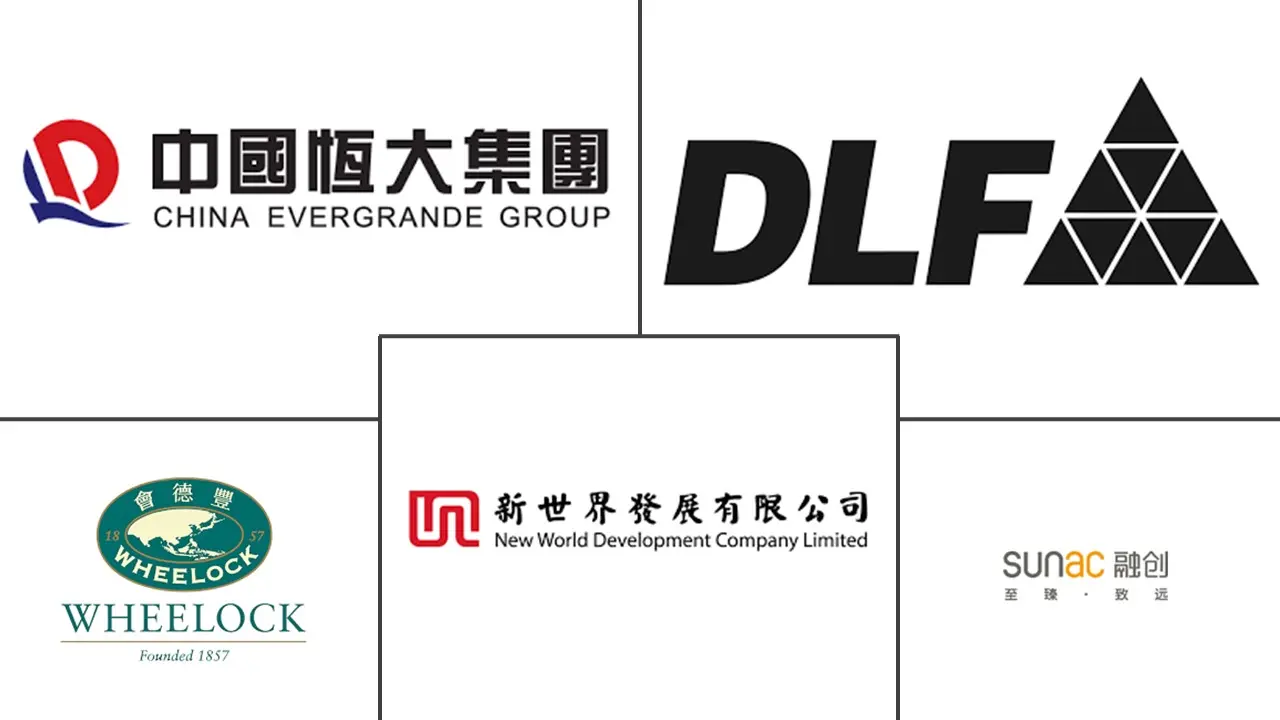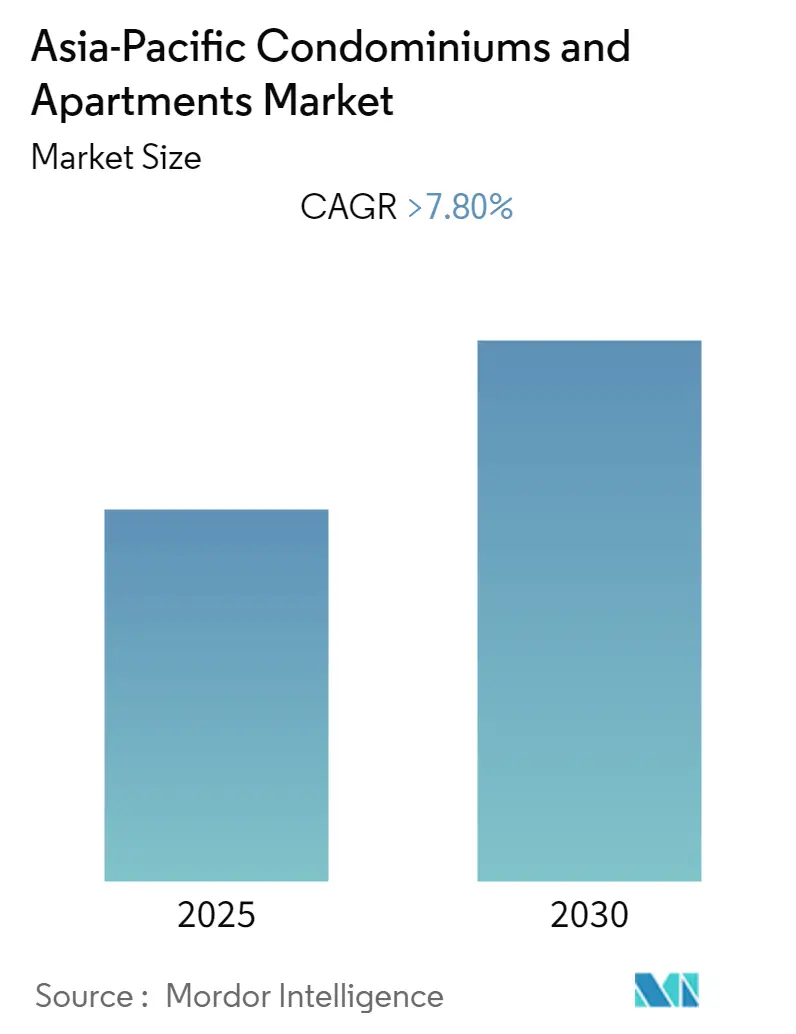
Asia-Pacific Condominiums and Apartments Market Analysis by Mordor Intelligence
The Asia-Pacific Condominiums and Apartments Market is expected to register a CAGR of greater than 7.8% during the forecast period.
- According to JLL, the lower investment volume is due to "a variety of macroeconomic factors," such as fewer trades in major markets, the region's currencies appreciating against the US dollar, and aggressive tightening of the US interest rates. Despite ongoing macroeconomic challenges, inflationary concerns, and rising debt costs, investors remain broadly positive on the region's real estate. They intend to expand their footprint in the region in the medium to long term. In Singapore, investment volumes totalled USD 2.3 billion in Q3 2022, down from USD 3.6 billion in the previous quarter. JLL attributes the drop to lengthy negotiations on major office deals as a result of widening price disparities between buyers and sellers. On the other hand, the volume represents a 116% improvement Y-o-Y, coming off of a low base in Q3 2021.
- For investors looking to invest in Asia-Pacific multifamily, the first port of call is invariably Japan, which has the region's most mature and largest market, attracting billions of dollars in investment each year. Australia is the only other country with a developing institutional-grade multifamily residential market. Other countries in the region have markets dominated by build-to-sell activities and limited availability of institutional products. Japan and Australia have the "most pronounced appetite" in Asia-Pacific for living products. China, South Korea, New Zealand, and India have less mature markets, with regulatory, development, and investment uncertainty weighing on activity. However, these markets have tremendous demographic trends, strong economies, and high demand for housing. The first movers may enjoy "considerable" benefits like capital appreciation returns.
- Rentals for HDB flats and private apartments increased in August 2022, and the trend shows no signs of abating. According to flash figures released by property portals 99.co and SRX, HDB rents increased by 2.4% in August 2022, compared to 1.5% in July, with rents rising across all flat types in both mature and non-mature estates. Condominium rents increased by 3.2% in August 2022, compared to 1.7% the previous month, with central Singapore experiencing the fastest growth at 3.7%. One of the reasons is that rising rental rates are putting a financial strain on many young locals considering renting their place.
- The 2022 ULI Asia Pacific Home Attainability Index examines home attainability in 28 cities across five Asia-Pacific countries, including Australia, China, Japan, Singapore, and South Korea. These countries have a combined population of about 1.8 billion or about 21% of the world's population. According to the median private home price to median annual household income ratio, Shenzhen, China, was deemed the least affordable, with more than 40 times the median income, followed by Hong Kong SAR, with more than 30 times, followed by Beijing and Shanghai. Shenzhen had the least amount of new housing stock among major Chinese cities over the last decade compared to population growth. Simultaneously, the city has a significant amount of informal housing, which means homes without legal titles that are not included in official private housing sector data and, thus, not included in the home attainability index. Informal housing stock, which is estimated to account for around 30% of total housing stock, is primarily used by migrants and low-income households.
Asia-Pacific Condominiums and Apartments Market Trends and Insights
Increase in Demand for Rental Properties
- While the Asia-Pacific real estate market outlook remains positive, there are some unknown risks. The pandemic had the potential to disrupt markets if new variants continued to emerge, slowing economic growth and halting cross-border distribution. The supply and distribution of construction materials may inevitably impact the region's real estate market. The global focus on the ongoing geopolitical tensions between Russia and Ukraine and the United States and China may continue to loom over all industries, including real estate. Nonetheless, investors can find opportunities despite these uncertainties, as trends point to a robust Asia-Pacific real estate market.
- The Indian rental housing market steadily recovered during the first quarter of 2022, with growth in the second quarter fueled by the gradual reopening of offices and educational institutions and the return of the workforce to these cities. Rental housing supplies in India fell by 9.8% Q-o-Q, with drops in Chennai, Hyderabad, and Delhi accounting for 1.9%, 4.8%, and 5.2%, respectively. Demand for rental homes increased by 29.0% Y-o-Y in the third quarter (Q3) of 2022, according to property buying and selling portal Magicbricks.
- China can potentially be the world's largest institutional, residential market, larger than the United States. Investors have already reacted to China's housing market transformation, with trades of income-generating residential assets on the mainland more than doubling the 2015-2019 average, according to MSCI-RCA data, with deal volumes in Hong Kong climbing even faster. Policymakers, particularly in Shanghai, have supported the local rental housing market through tax breaks, financial assistance templates, and improved legal frameworks governing asset conversion for residential use.
- Japan's housing market remains popular due to its defensive nature, which was again demonstrated during the pandemic. Although average residential rents in Tokyo's central five wards (C5W) fell by 5% between Q1/2020 and Q3/2021, they have already recovered in recent quarters, offsetting half of the rental drop seen during the pandemic. Tokyo's residential market is expected to resume its steady growth trajectory as Japan's economy continues its gradual recovery and population inflow to the capital (both from other domestic regions and from abroad) returns. Nonetheless, new risks are emerging in this relatively stable industry. The first risk factor stems from fierce competition for residential real estate.
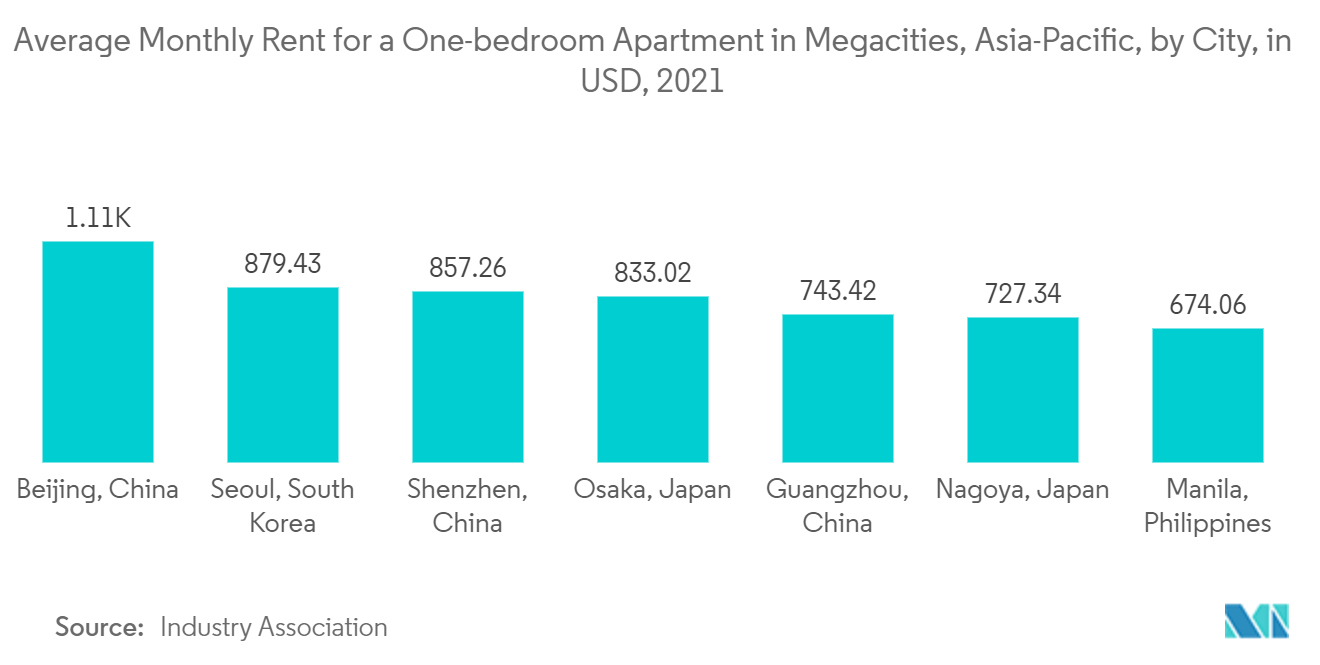
Increasing Urbanization Demanding Affordable Housing
- A major chunk of the worldwide population lacks access to decent quality housing, with Asia-Pacific accounting for roughly 60% of the population. This housing shortage is most acute in low- and middle-income countries, where urbanization and population growth outpace formal housing supply. The Asian Development Bank (ADB) believes that to be called a livable city, which provides adequate housing for all its residents, particularly the poor and vulnerable. Unplanned urbanization and housing shortages have exacerbated informal settlements and slum intensification. Informal settlements and slums are frequently located in hazardous areas, which are congested, lack adequate services, and are vulnerable to natural disasters.
- Singapore is the only gateway city in the Asia-Pacific region where housing is reasonably priced and accessible compared to the region's most populous cities, according to the Urban Land Institute's (ULI) First Home Attainability Index report. Due to the low cost of Housing Development Board (HDB) units, which have a median price of USD 379,283, Singapore has the highest homeownership rate of nearly 90%. Private homes with a median price of USD 1.13 million account for less than 20% of total housing stock.
- The Pradhan Mantri Awas Yojana (PMAY), launched in 2015, is the Government of India's flagship mission to address the issue of shortage of affordable housing in the country. By 2022, it intends to provide pucca houses to all eligible urban households. The Affordable Rental Housing Complexes (ARHCs) program is a sub-scheme of the PMAY-Urban program. This scheme aims to make it easier for urban migrants and low-income groups to find dignified, affordable rental housing close to their workplaces. However, affordable housing sales in Tier I cities such as Mumbai, Pune, Bengaluru, and Hyderabad fell in 2020 and 2021 compared to 2019.
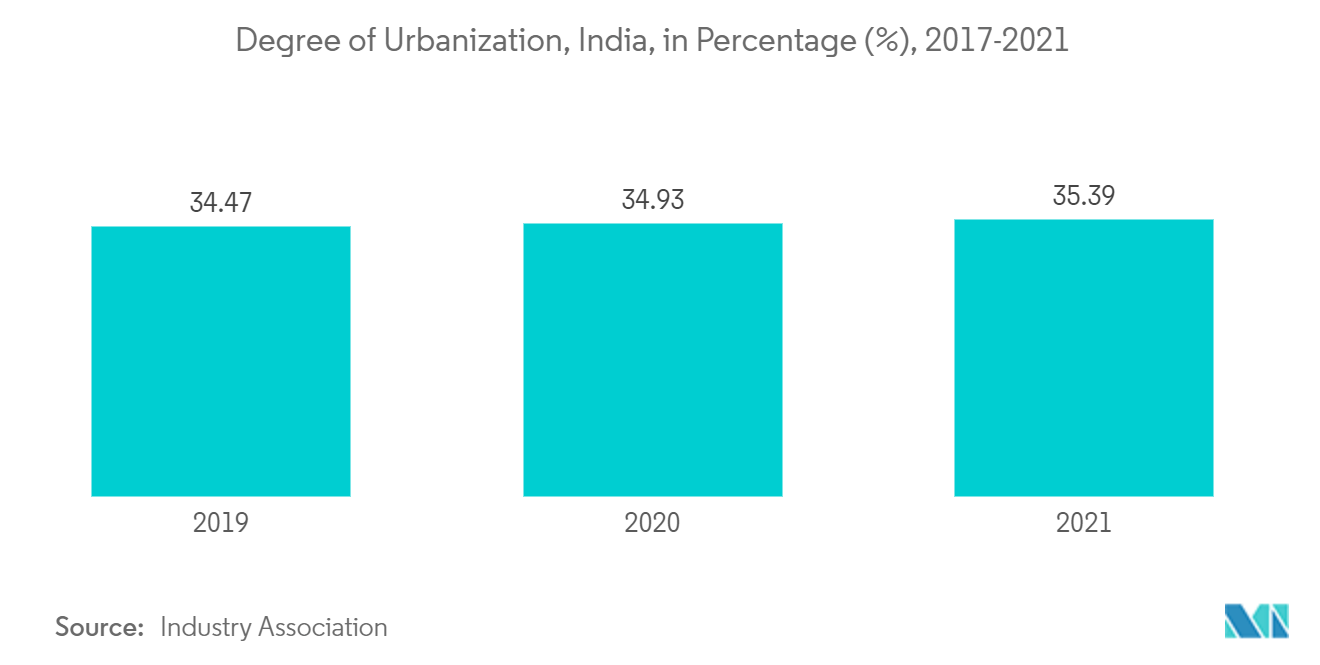
Competitive Landscape
The Asia-Pacific condominiums and apartments market is fragmented with the presence of a large number of local and regional players, as well as global players. The major players include the China Evergrande Group, Sunac China, New World Development Co. Ltd, Wheelock and Company, and DLF India. Local players can increase their presence by investing in affordable housing in the region, while global players are collaborating with other stakeholders of the industry to create more opportunities in the market.
Asia-Pacific Condominiums and Apartments Industry Leaders
-
China Evergrande Group
-
Sunac China
-
New World Development Co. Ltd
-
Wheelock and Company
-
DLF India
- *Disclaimer: Major Players sorted in no particular order
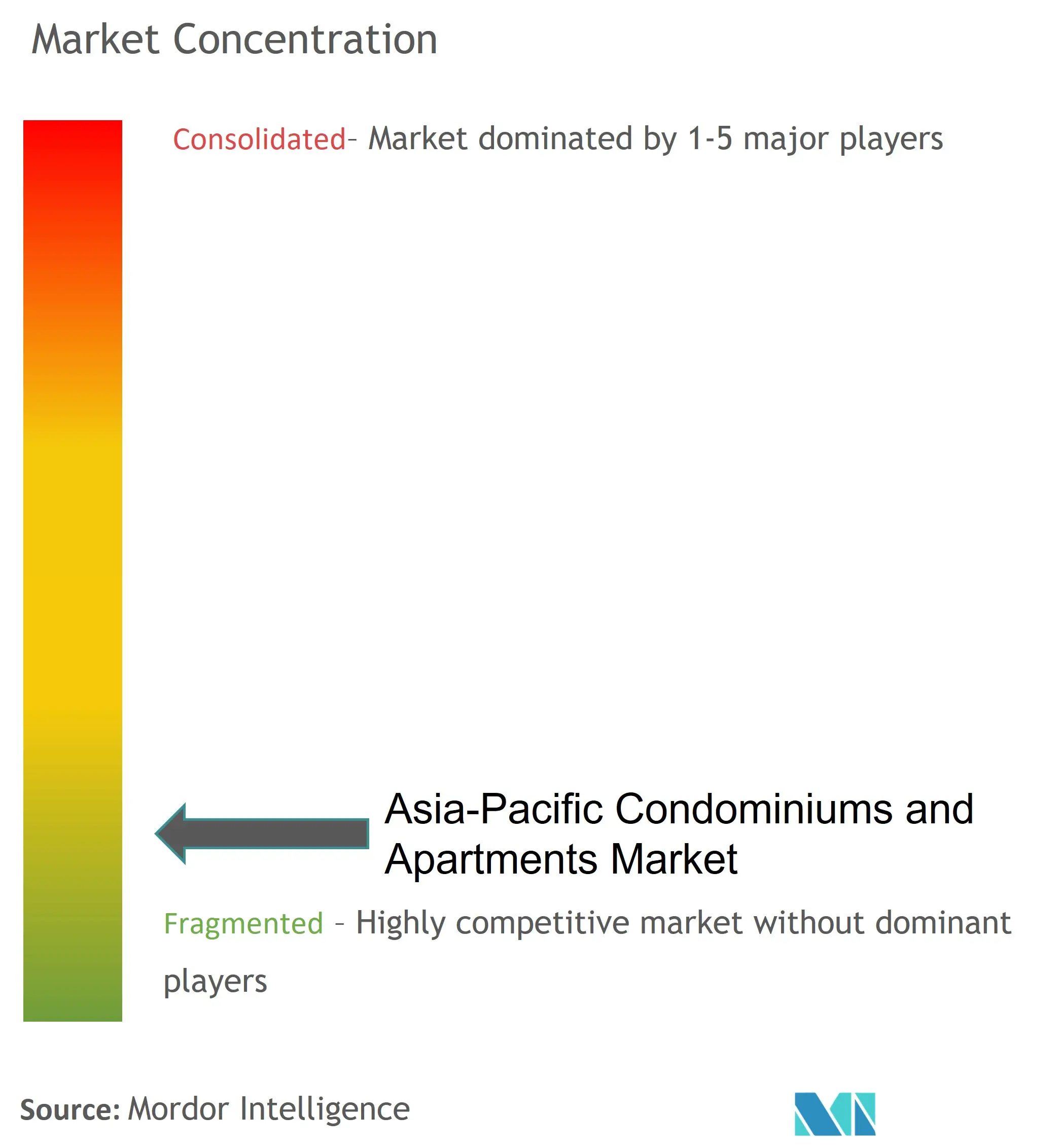
Recent Industry Developments
- October 2022: The USD 280 million Gold Coast condo development in Australia is a collaboration between Banda, a development and design studio founded by Princess Beatrice's husband, Edo Mapelli Mozzi, and Australian real estate expert Rory O'Brien. The new development will provide the most luxurious condos in the area. Banda Design Studio will create 28 units: 20 residences, five sky homes, two duplex sub-penthouses, and a super-penthouse.
- March 2022: Goldman Sachs may collaborate with trading firm Sojitz to acquire and renovate older apartments that would otherwise go unnoticed by real estate investors. By the summer, they plan to form a joint venture to focus on rental housing in major Japanese cities. Properties that have been improved will be sold in batches to financial institutions and investment funds. The partners intend to invest JPY 40-50 billion (USD 323-405 million) in the company each year.
Asia-Pacific Condominiums and Apartments Market Report Scope
An apartment is a private residence in a building or house divided into several separate dwellings. A condominium (also known as a "condo") is a large property complex made up of individual units, each of which is owned separately. Typically, ownership includes a nonexclusive interest in certain "community property" managed by the condominium management. The report includes a complete background analysis of the Asia-Pacific condominiums and apartments market, including the assessment of the economy and contribution of sectors in the economy, market overview, market size estimation for key segments, emerging trends in the market segments, market dynamics, and geographical trends, and COVID-19 impact.
The Asia Pacific Condominiums and Apartments Market is Segmented By Country (China, Japan, India, ASEAN Countries, and the Rest of Asia-Pacific). The report offers market size and forecasts in value (USD billion) for all the above segments.
| China |
| Japan |
| India |
| ASEAN Countries |
| Rest of Asia-Pacific |
| By Country | China |
| Japan | |
| India | |
| ASEAN Countries | |
| Rest of Asia-Pacific |
Key Questions Answered in the Report
What is the current Asia-Pacific Condominiums and Apartments Market size?
The Asia-Pacific Condominiums and Apartments Market is projected to register a CAGR of greater than 7.8% during the forecast period (2025-2030)
Who are the key players in Asia-Pacific Condominiums and Apartments Market?
China Evergrande Group, Sunac China, New World Development Co. Ltd, Wheelock and Company and DLF India are the major companies operating in the Asia-Pacific Condominiums and Apartments Market.
What years does this Asia-Pacific Condominiums and Apartments Market cover?
The report covers the Asia-Pacific Condominiums and Apartments Market historical market size for years: 2020, 2021, 2022, 2023 and 2024. The report also forecasts the Asia-Pacific Condominiums and Apartments Market size for years: 2025, 2026, 2027, 2028, 2029 and 2030.
Page last updated on:
Asia-Pacific Condominiums and Apartments Market Report
Statistics for the 2025 Asia-Pacific Condominiums and Apartments market share, size and revenue growth rate, created by Mordor Intelligence™ Industry Reports. Asia-Pacific Condominiums and Apartments analysis includes a market forecast outlook for 2025 to 2030 and historical overview. Get a sample of this industry analysis as a free report PDF download.
